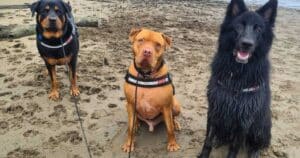
Dogs that bark and lunge at other dogs, people and a wide range of other environmental triggers around them are often viewed as being aggressive. In most cases however, a reactive dog is ‘acting out’ due to fear and is using this dog behaviour to make the thing it fears go away.
A reactive dog due to fear will often see a dog barking or lunging, this is known to be distance increasing behaviour and it is very commonly seen in dogs’ reactions to moving things such as other dogs, cars, motor bikes, joggers, bicycles, prams, skate boards and the list goes on and on.
It is in fact very common for dogs that are anxious or frightened to demonstrate this fear-based aggression response and it is usually very successful for them!
When they bark and lunge, owners do tend to either move them away or the other party moves away from our misbehaving dog very quickly! This provides strong reinforcement for our dog and tells them that this behaviour works, that it is successful at moving them or the ‘trigger’ away from them.
So, the next time they see something they are scared of they will choose to do exactly the same behaviour. Why wouldn’t they? It works really well. Thus, the barking and lunging continues and may even get more intense as it is reinforced.
One method for treating a reactive dog and to help these dogs to overcome their fears, and therefore reduce their fearful behaviour, is called the “Look at That Game” or LAT. It is basically a Counter Conditioning game that teaches the dog that it is ok to look at scary things, but that they really are no big deal and there is no need to react to them. It will help our dogs to stay both calm and safe.
The end result is simply that the dog will look at the ‘trigger’ (thing they are reactive to) and then look back at the handler. So how do we go about teaching this game to help treat dog reactivity?
Step One:
Decide on your marker. This is what you will use to indicate precisely to your dog that they have done something really good and a reward will follow. You can use a clicker or a verbal marker such a “Yes”, “Yip” or “Good”.
Step Two:
You need to load your marker and give it some power. To do this you use your marker eg; Yes, quickly followed by a treat. Do this repeatedly until whenever you say this word your dog looks to you eagerly for their treat.
Step Three:
It is important in this step that you work the dog at a distance from the trigger that is under threshold for the dog. This means that they can see the trigger and are aware of it but are not reacting to it. Finding this distance can take some experimentation so it is better to start further away than you think and then move closer.
Set up your environment with your trigger at the correct distance. As soon as the dog turns their head to look at the trigger say “Yes”. They should then turn their head to you in anticipation of the treat. Deliver treat quickly. You will need to repeat this step a number of times.
Note – if your dog is not turning their head back to look at you then you need to either increase your distance from the trigger or go back and work on Step Two.
To watch the video of Tikka the Staffy and read more about a reactive dog and how to keep your dog under their reactive threshold, click here. It’s really important!
Step Four:
Once step three is solid, your dog will consistently look back at you after looking at the trigger and hearing the marker word. Now let your dog look at the trigger but hold your marker word. If they will now look at the trigger and then back at you without hearing the marker word, but in anticipation of the treat, mark the head turn towards you instead and give the treat.
So you have effectively now moved your “Yes” from when they look at the trigger to when they turn their head back to look at you. Don’t forget to always deliver the treat quickly following your marker.
Step Five:
It is now time to start decreasing the distance between your dog and the trigger. It is important that you don’t rush this stage. Let your dog master small increments and you will have quicker success. If your dog won’t look back, or won’t take treats then you have moved too close, too soon. Increase your distance and start again. Watch the dog reactivity video mentioned above if you are still having issues here.
Step Six:
Proofing, or in other words, making this new behaviour bullet proof and involves training it in many different scenarios. Different places, different times of day, different triggers, even different handlers. This is an important step to ensure your dog doesn’t slip back into his old barking and lunging ways.
We always want to set up our training environment so that the dog can have maximum success with minimum errors. However, the real world can intrude into our perfect training space and the unexpected can and does happen. If you happen to get caught out and any of your dog’s triggers appears out of nowhere, do a U-Turn and move away from the trigger until you are again at a comfortable working distance.
Please also remember that it takes time to change deep seated emotional fears. This is not a quick fix and nor is it the only method available for helping your fearful dog. It is however, a fantastic tool to have in your fearful dogs training tool box. Go at your dog’s pace and be patient.
Author Bio: Deb Anderson is a NDTF qualified dog trainer and high school teacher. She has a special interest in herding dogs for both training and trialing. Fearful and aggressive dogs is a particular passion and an area she has done extensive further study and training. She lives with three kelpies and two fluffies!

Poor gut health and dog behaviour issues
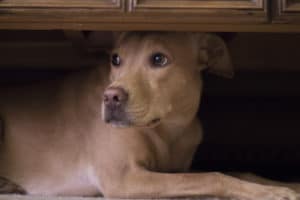
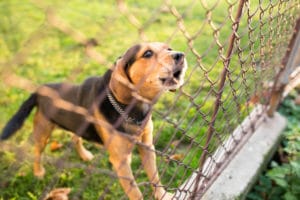
How to deal with excessive barking in dogs
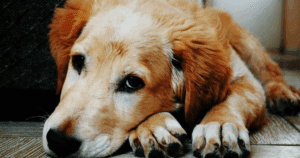
Treating Noise Phobia in dogs and cats
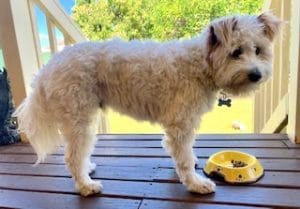


Get your paws on Lara Shannon’s best selling books ‘Eat, Play, Love (your dog) and World of Dogs.
Available in Australia, USA, UK and Canada.